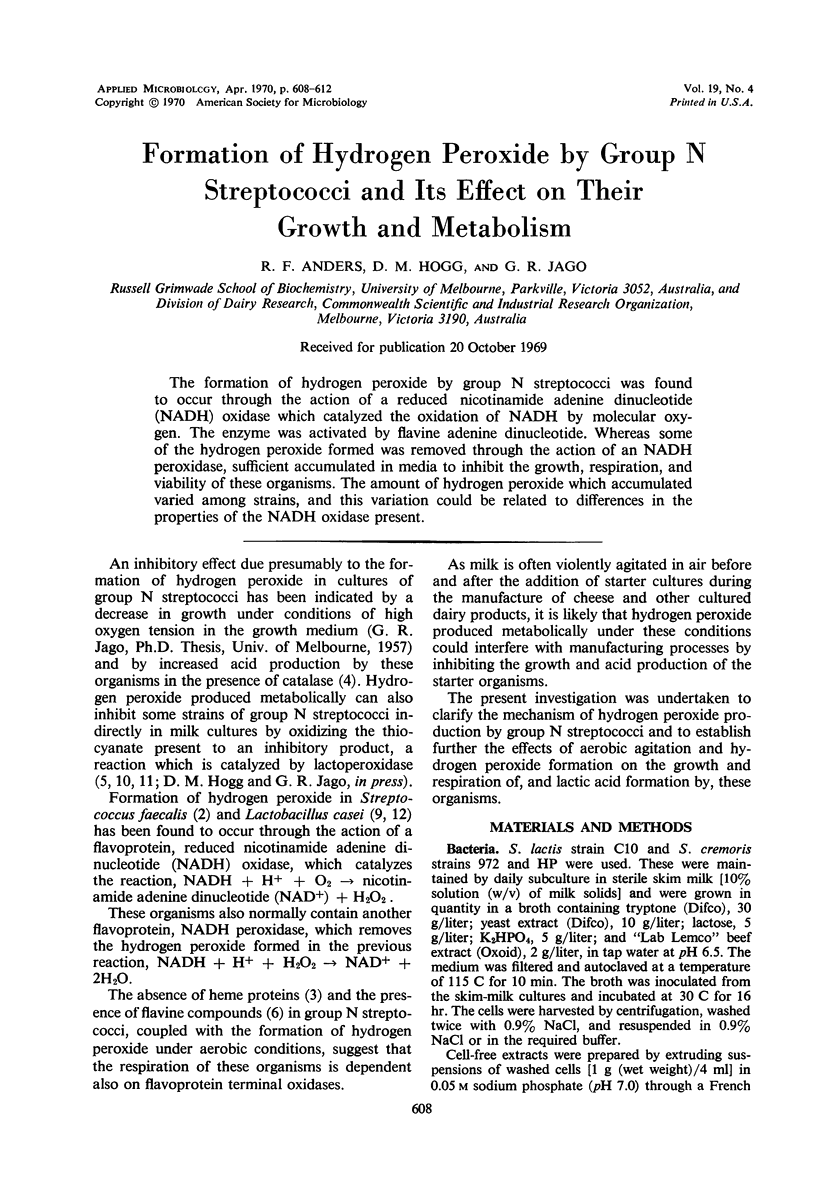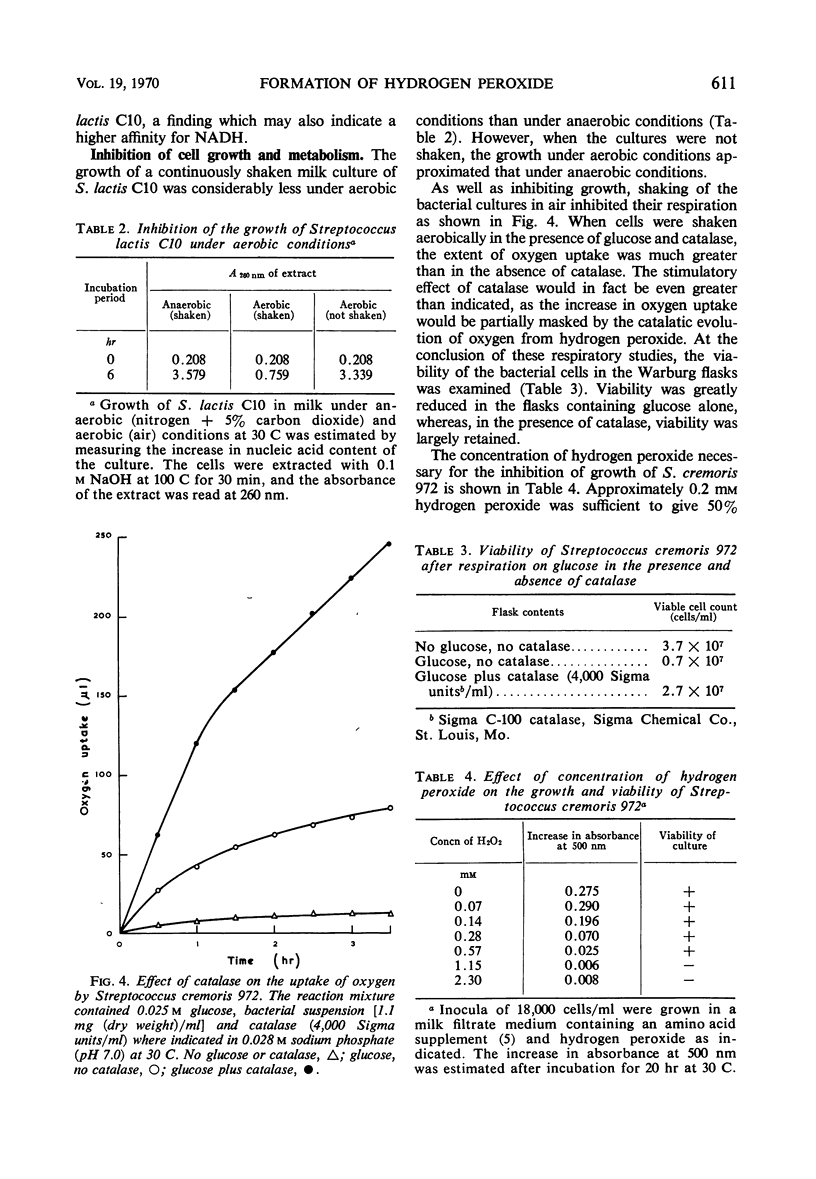Abstract
The formation of hydrogen peroxide by group N streptococci was found to occur through the action of a reduced nicotinamide adenine dinucleotide (NADH) oxidase which catalyzed the oxidation of NADH by molecular oxygen. The enzyme was activated by flavine adenine dinucleotide. Whereas some of the hydrogen peroxide formed was removed through the action of an NADH peroxidase, sufficient accumulated in media to inhibit the growth, respiration, and viability of these organisms. The amount of hydrogen peroxide which accumulated varied among strains, and this variation could be related to differences in the properties of the NADH oxidase present.
Full text
PDF




Selected References
These references are in PubMed. This may not be the complete list of references from this article.
- Farrell M. A. Studies on the Respiratory Mechanism of the Streptococci. J Bacteriol. 1935 Apr;29(4):411–435. doi: 10.1128/jb.29.4.411-435.1935. [DOI] [PMC free article] [PubMed] [Google Scholar]
- Gilliland S. E., Speck M. L. Biological response of lactic streptococci and lactobacilli to catalase. Appl Microbiol. 1969 Jun;17(6):797–800. doi: 10.1128/am.17.6.797-800.1969. [DOI] [PMC free article] [PubMed] [Google Scholar]
- JAGO G. R., MORRISON M. Anti-streptococcal activity of lactoperoxidase III. Proc Soc Exp Biol Med. 1962 Dec;111:585–588. doi: 10.3181/00379727-111-27862. [DOI] [PubMed] [Google Scholar]
- LOWRY O. H., ROSEBROUGH N. J., FARR A. L., RANDALL R. J. Protein measurement with the Folin phenol reagent. J Biol Chem. 1951 Nov;193(1):265–275. [PubMed] [Google Scholar]
- Oram J. D., Reiter B. The inhibition of streptococci by lactoperoxidase, thiocyanate and hydrogen peroxide. The effect of the inhibitory system on susceptible and resistant strains of group N streptococci. Biochem J. 1966 Aug;100(2):373–381. doi: 10.1042/bj1000373. [DOI] [PMC free article] [PubMed] [Google Scholar]
- Oram J. D., Reiter B. The inhibition of streptococci by lactoperoxidase, thiocyanate and hydrogen peroxide. The oxidation of thiocyanate and the nature of the inhibitory compound. Biochem J. 1966 Aug;100(2):382–388. doi: 10.1042/bj1000382. [DOI] [PMC free article] [PubMed] [Google Scholar]
- Walker G. A., Kilgour G. L. Pyridine nucleotide oxidizing enzymes of Lactobacillus casei. II. Oxidase and peroxidase. Arch Biochem Biophys. 1965 Sep;111(3):534–539. doi: 10.1016/0003-9861(65)90232-8. [DOI] [PubMed] [Google Scholar]


